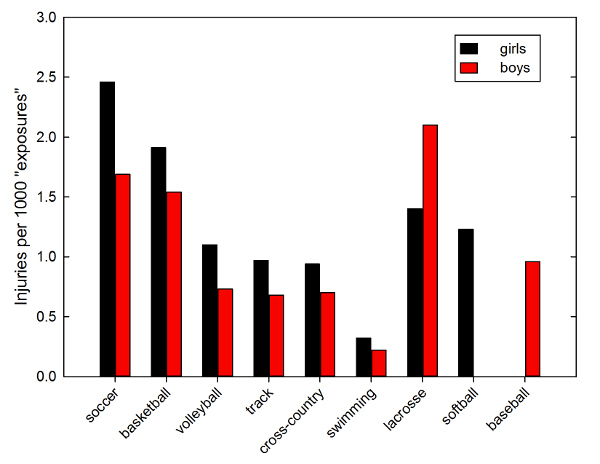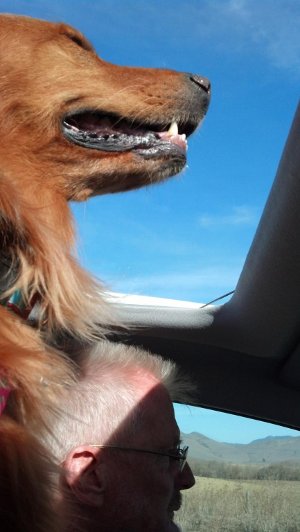The topic of sports injuries is unavoidable these days– the sports radio shows I listen to in the car probably spend an hour a week bemoaning the toll playing football takes on kids. Never a publication to shy away from topics that bring easy clicks, Vox weighs in with The Most Dangerous High School Sports… Continue reading On Sports Injury Rates, or Today in Why I’m Glad I’m Not a Social Scientist
Category: Medicine
PNAS: Dr. Richard Meidell, Neonatologist
I’ve decided to do a new round of profiles in the Project for Non-Academic Science (acronym deliberately chosen to coincide with a journal), as a way of getting a little more information out there to students studying in STEM fields who will likely end up with jobs off the “standard” academic science track. Seventh in… Continue reading PNAS: Dr. Richard Meidell, Neonatologist
“Earthing” Is a Bunch of Crap
A little while back, I was put in touch with a Wall Street Journal writer who was looking into a new-ish health fad called “earthing,” which involves people sleeping on special grounded mats and that sort of thing. The basis of this particular bit of quackery is the notion that spending time indoors, out of… Continue reading “Earthing” Is a Bunch of Crap
Concussions, Back Problems, and Odd Statistics
Jonah Lehrer has a big article at Grantland on concussions in high school football that paints a fairly bleak picture: The sickness will be rooted in football’s tragic flaw, which is that it inflicts concussions on its players with devastating frequency. Although estimates vary, several studies suggest that up to 15 percent of football players… Continue reading Concussions, Back Problems, and Odd Statistics
How Does the Pulse Meter on Our Exercise Bike Work?
Unlike the previous post, this is not a rhetorical question that I will ask and then answer. I genuinely do not know the answer. I could Google it, of course, but I’d like to see if somebody reading this is able to deduce the correct answer from the available evidence. So, here’s the deal: as… Continue reading How Does the Pulse Meter on Our Exercise Bike Work?
PNAS: Jennifer Saam, Medical Science Liason
(This post is part of the new round of interviews of non-academic scientists, giving the responses of Jennifer Saam, who translates between different departments at a medical diagnostic laboratory. The goal is to provide some additional information for science students thinking about their fiuture careers, describing options beyond the assumed default Ph.D.–post-doc–academic-job track.) 1) What… Continue reading PNAS: Jennifer Saam, Medical Science Liason
PNAS: Will Hendrick, (Former) Biomedical Technician
(This post is part of the new round of interviews of non-academic scientists, giving the responses of Will Hendrick, who worked as a lab tech before returning to school. (This may seem like an odd inclusion, but there are people who do this sort of thing forever, so I think it’s valid.) The goal is… Continue reading PNAS: Will Hendrick, (Former) Biomedical Technician
Biomedicine: The English Literature of the Sciences?
Thursday’s post about the troubles of biomedical scientists drew a response from Mad Mike saying that, no, biomedical science Ph.D.’s really don’t have any career options outside of academia, and pointing to Jessica Palmer’s post on the same subject for corroboration. Jessica writes: This is something I’ve tried to explain many times to nonscientists: most… Continue reading Biomedicine: The English Literature of the Sciences?
Your Problems Are Not Unique
Via Mad Mike, a discussion of why it sucks to be a biomedical scientist: 87% of my blog-related e-mail is from unhappy, bitter, troubled, distraught biomed grad students, postdocs, technicians, and early-career faculty. Others write to me with problems, but these tend to be of the “I’m frustrated with my advisor” sort rather than the… Continue reading Your Problems Are Not Unique
Rock Stars of Science
So, if you look at this picture: You might be asking yourself “Why does Debbie Harry rate Secret Service protection?” But no, this isn’t a photo from some alternate universe where the lead singer of Blondie went on to become leader of the free world, it’s part of the Rock Stars of Science campaign by… Continue reading Rock Stars of Science

